Archive : Article / Volume 1, Issue 1
- Research Article | DOI:
- https://doi.org/10.58489/2836-8630/005
Patient Safety in Nursing Care
1 dr hab. MBA, prof. Warsaw Medical University named Tadeusz Kozluk, Vice-Rector for Education and Development, Warsaw.Poland
2 mgr Multidisciplinary Provincial Hospital in Gorzów Wielkopolski. PolandNursing director
Joanna JasiÅska
Joanna JasiÅska, Katarzyna Barna, (2023). Patient Safety in Nursing Care. Journal of Clinical Peadiatrics and Care. 1(1). DOI: 10.58489/2836-8630/005
© 2023 Joanna JasiÅska, this is an open access article distributed under the Creative Commons Attribution License, which permits unrestricted use, distribution, and reproduction in any medium, provided the original work is properly cited.
- Received Date: 10-01-2023
- Accepted Date: 23-02-2023
- Published Date: 08-03-2023
nurse; interpersonal communication; patientâs safety; health care quality; adverse event
Abstract
Background. Patient safetyis an undeniable important aspectin the context of improvingthe quality of the entire health system. Improving patientâs safety should be comprehensive and includetwo dimensions of safety â technical and functional. One source of information aboutthe level of patientâs safety are medical staff, but there is a gap here, which is no central system that would collect, analyze and draw conclusions from a sufficiently large number of problems reported by stakeholders.
Objectives. The aim of this study was to evaluate the patientâs safety on the basis of the declaration of nurses.
Material and Methods. The study involved 160 professionally active nurses. The study was performed by the authors questionnaire based on the questionnaire âHospital Survey on Patient Safety Cultureâ developed by the Agency for Healthcare Research and Quality. The selection of the sample was based on the availability of respondents. The study was performed in January 2021. More than ¾ of respondents indicated the hospital as a placeof employment. Results. Nearly 40% of respondents said that their boss rarely and very rarely takes into account the suggestions of employees for the improvement of patientâs safety. Over 40% of respondents said that their workplace is often and very often trying to do too many tasks and too fast.
Conclusions. It is necessary to create a culture of safety by improving communication between doctors and nurses or line managerand nurses. There is a need for greater involvement of line manager in solving problems reported by nurses in terms of providing safe care to patients (Piel. Zdr. Publ.2021, 5, 1, 33â39).
Introduction
Patient safety is an important aspect in the context of quality improvement in the entire health care system, especially in the area of hospitals, where the effects of adverse events are likely to pose a greaterthreat to the healthand life of the patientthan in outpatient care [1].
Improving patient safety must be comprehensive. To this end, it should cover two dimensions of security - technical and functional. The technical dimension understood as professionalism of operation. It concerns such components of safety as education, practical skills,experience of medical workers, the number of medical personnel adjusted to the state of health and the number of patients, sanitary and hygienic conditions in which patients are staying, conditions for storing medicines, technical condition of medical apparatusand equipment.
However, ensuring safety in this dimension does not guarantee that the patient will not be harmed. It is equally important to ensure safety in the functional dimension, which is understood as the professionalism of the relationship. This dimension relates to broadly understood communication with the patient and may includesuch components as: comprehensible transferof information, showingempathy and understanding, devoting time and attention to the patient or asking about their needs. Taking these two dimensions into account in the management of the risk of adverse events provides the basis for achieving a significant improvement in this particular case of the qualityof patient safety [2–3].
Difficulties in managing the above-mentioned area of quality, however, are caused by the lack of reliable information on meeting the criteria of the technicaland functional dimension, which is particularly important in the case of medical entities providing services such as “hospital 24-hour health services”. While in the case of medical entities that have obtained accreditation from the Center for Quality Monitoring in Healthcare in Krakow, it is possible to assess the fulfillment of the above-mentioned criteria more closely, in the case of other medical facilities it is not feasible [4].
One of the sourcesof information about the degreeof fulfillment of the abovecriteria are the medical workersthemselves, but thereis a gap here - the lack of a central systemthat could collect, analyze and draw conclusions from a sufficiently largegroup of problems reported by medical personneland / or patients [5].
The study was designedto collect and evaluate information on patient safetybased on declarations by professionally active nurses.
Material and methods
The study included 160 nurses who declared employment as a nurse in a medical entity. The study was conducted using the proprietary questionnaire based on several questions regarding the content of the questionnaire "Hospital Survey on Patient Safety Culture" developed by the Healthcare Research and Quality Agency - AHRQ. Occasional sampling was used. Only descriptive statistics were used to analyze the results. In order to obtain 160 questionnaires, 200 questionnaires were distributed (sampleimplementation rate
-80%). The surveywas conducted in January 2021.
More than three-quarters of respondents indicated the hospital as a workplace. The length of service in the profession in months was as follows:≤ 12 - 54%,> 12 and ≤ 36 - 16%),> 36 - 14%, the missing data constituted 16%.
The research results
Almost a quarter of the surveyednurses made a mistake in administering pharmacotherapy to their patientsduring their work (Fig. 1). Given that the questionuses the term "ever", it seems that the scale of adverseevents reported by nurses in this populartype of therapy is relatively small. However, it should be noted that the length of service in the profession of respondents in half of the cases did not exceed a year.
The general scale of adverse events(Fig. 2) in the place of employment of the surveyednurses (it should be remembered that these are subjective declarations) indicates that these events are sporadic (answer: very rare and rarely - 84%).

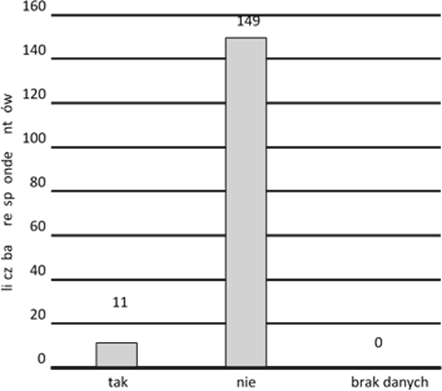
Most of the surveyed nurses are convinced that information about adverse events occurring in their workplace is not available to them (answer: very rare and rarely - 65%). On the other hand, the literature [6] indicates that an effective way to reduce the severity of adverse eventsis the implementation of Reporting and Learning Systems(RLS). This systemis based on the principle of transparency of the mistakes made for other members of the organization, thanks to which it is possible to develop solutions aimed at their elimination. Based on the respondents' declarations (Fig. 3), it can be assumed that such a system does not work in the medicalunits of the surveyed nurses- it poses a greaterthreat to hospitalized patients than if such a system existed.
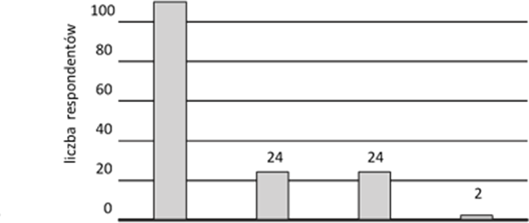
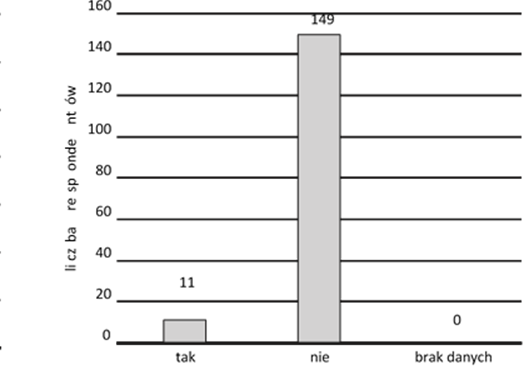
Declarations of the surveyed nurses regarding the storage of drugs in their workplace raise serious doubts as to the safety of patients in the fieldof pharmacotherapy. The responses of about one third of the respondents suggest that the patients received drugs which, due to the temperature at which they are stored, do not guarantee their suitability for treatment (answer: no - 15%) or that the storage conditions are not controlled (answer: I do not know - 15%), so it cannot be guaranteed that these drugs do not endanger the health of the patient (Fig. 4).
An important issue from the point of view of patient safety is the psychophysical efficiency of medical personnel. In the case of multiple employment in the Polish health care system [7], the question arises whether the person caring for the patient, eg a nurse, is psychophysically fit. The collecteddata show that only 7% of nurses declare second employment (Fig. 5). It should be noted, however, that the respondents are also students, which may have a significant impact on the decision not to take up additional employment.This is especially dangerous for the patientwhen the shiftnurse moves to the next workplace after a night shift. It is equally dangerousfor both the nurse and the patient (Fig. 6).
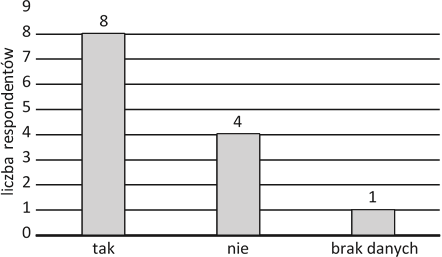
Interms of patientsafety, communication betweenpeople caring for the patient(e.g., a nurse and a doctor) [8]. It seems that the more frequent the communication between the performers of the therapeutic process (quantitative approach) and the more details aboutthe patient (qualitative approach), the more complete the picture of the patient's health status for individual members of the therapeutic team - appropriate actions to be taken at the right time. The collected data show that nurses are not satisfied with the frequency and scope of the exchange of information about the patient with the doctor, as half of the respondents assess these two parameters below the average (Fig. 7). Lack of communication adequate to the needs of nurses may significantly hinder the correct nursing diagnosis, and thus be associated with too late diagnosis and implementation of the necessary measures for patient safety.
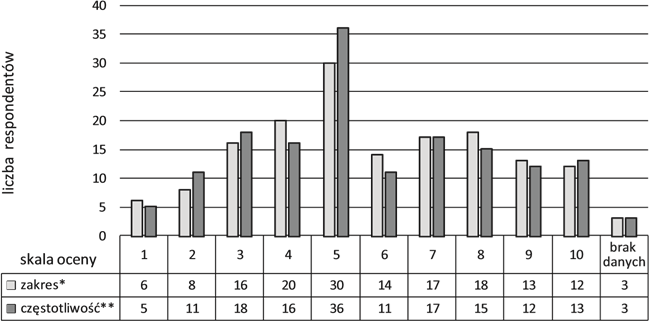
Effective communication between the doctor and the patient can significantly reduce the stress associated with hospitalization [9]. Additionally, a patient who is inadequately informed about his or her health condition, planned therapy or prognosis cannot consciously decide about himself in the context of health and disease, which prevents the patient from participating in the treatment process based on the principle of partnership. The collected data show that the doctor-patient communication is ineffective (perhaps the information is not conveyedor is conveyed in a way that is incomprehensible to the patient),because the messages that should be conveyed by the doctor are usually(often and very often) communicated by the patient %) to be recoveredfrom the nurse.
The collected data show that communication between members of the nursing team is satisfactory (answer: often and very often - 72%) for nurses even in a crisis situation, i.e., characterized by a largenumber of tasksto be performed in a relatively short time.
The workload of medical personnel is an important factor determining patient safety [10], both in terms of providing medical care on time and the time needed for proper observation / nursing / medical diagnosis. The collected data show that the organization of work in a significant (answer: often and very often - 44%) part of the jobs of the surveyed nurses is inappropriate. That is, the state of health and the number of patients is inadequate to the number of nursing staff.
A report from the Institute of Medicine (IOM, USA 2019) indicates that the most common cause of medical errors today is not carelessness, lack of knowledgeor practical skills.The reasons can be found in the poor organization of the health care system [11]. The manager, instead of focusing his actions solely on punishing the employee, should first of all analyze the undesirable events in terms of ergonomic conditions and assess the degree ofemployee participation in the occurrence of an undesirable event - this approach is considered the most appropriate [11]. The collected data show that managers in the workplaces of the surveyed nurses lack such awareness (answer: sometimes, often, very often - 43%). This approach of the managersof the surveyed nurses is not conducive to solving problemsrelated to patientsafety.
As mentioned at the beginning of the work, medical personnel is an important source of information on adverse events. The commentsmade by medicalpersonnel may significantly improve patient safety,reducing the numberof situations favorableto the occurrence of both actual and potential harm to a patient [12]. The collected data show that the heads of the surveyed nurses to a large extent (answer: very rarely, rarely, sometimes - 66%) do not use the potential of the staff as a source of information on improving patient safety.
In the context of patient safety, it should be remembered that not only the error learning system (RLS) [6] is important, but also the system of continuing professional development (CPD) for healthcare workers. Scientific research confirms that the level of education affects the quality of care and the incidence of adverse events [13]. The collected data show that nurses' managersdo not take sufficient measuresto improve patientsafety in termsof CPD (answer: very rarely and rarely - 51%).
Conclusion
The conducted research clearlyconfirms the need to improvepatient safety in medical entities (in Poland) being the place of employment of the surveyed nurses.
Important conditions for increasing the safety of patients hospitalized in Polish hospitalsinclude:
- Creating conditionsthat guarantee proper storage of medicines and developing mechanisms to control these conditions.
- Improving communication between management staff - nurses,doctors - nurses,doctors – patients.
- Motivating the immediate superiors of nurses to get involved in improving the work organization of their employees.
- Adaptation of the nursingstaff to the health condition and number of patients, so that work does not have to be carried out in "crisis mode".
- Establishment of an anonymous system for reporting events affecting patient safety (RLS) in the hospital.
- Management efforts to increase the number of nurses involved in the process of continuous professional development (CPD), in particular through forms of education enabling the assessment of their results (ending with a knowledge and / or skills examination).
References
- Labon M.: Niebezpieczne Szpitale 5/2021. Dokument z witryny internetowej dostępny pod adresem:
- Czerw A., Religioni U., Olejniczak D.: (2021). Metody pomiaru oraz oceny jakości świadczonych usług w podmiotach leczniczych. Probl. Hig. Epidemiol. 93(2), 269–273.
- Miller M., Supranowicz P., Gębska-Kuczerowska A., Car J. (2018). Ocena jakości usług medycznych przez pacjentów szpitali. Przegl. Epidemiol. 62, 643–650.
- Lewandowski R. (2012). Narzędzia doskonalenia jakości w ochronie zdrowia. Przedsiębiorczość i zarządzanie, tom XIII, zeszyt 1, 47–61.
- Kruk-Kupiec G.: Zarządzanie ryzykiem zdarzeń niepożądanych. Projekt bezpiecznej praktyki medycznej. Dokument z witryny internetowej Ministerstwa Zdrowia dostępny pod adresem.
- Gajewski P., Bała M. (2021). Zdarzenia niepożądane jako element oceny jakości opieki medycznej w programie akredytacji szpitali. Med. Prakt. Dokument z witryny internetowej dostępny pod adresem.
- Golinowska S., Kocot E., Sowa A. (2021). Zasoby kadr dla sektora zdrowotnego. Dotychczasowe tendencje i prognozy. Zdr. Publ. Zarz. 11(2), 135–136.
- Centrum Kształcenia Podyplomowego Pielęgniarek i Położnych, Komunikowanie Interpersonalne w Pielęgniarstwie (NR 09/17).
- Joumard I., André C., Nicq C. (2019). Health Care Systems Efficiency and Institutions. OECD Economics Department Working Paper, No. 769. OECD, Paris.
- Kirkman-Liff B.L., van der Ven W.P. (2017). Improving Efficiency in the Dutch Health Care System: Current Innovations and Future Options. „Health Policy”, Vol. 13(1).
- Lighter D.E. (2018). Advanced Performance Improvement In Health Care. Principles and Methods. Jones and Bartlett Publ., Sudbury, MA.
- Loeb JM. (2014). The Current State of Performance Measurement in Health Care. „International Journal for Quality in Health Care”, Vol. 16.
- Swayne L.E., Duncan W.J., Ginter M.P.: Strategic Management of Health Care Organizations.
- Jossey-Bass, Wiley & Sons, Chichester, West Sussex, England 2018.
- The Healthcare Quality Book. Vision, Strategy, and Tools. Eds. E.R. Ransom, M.S. Joshi, D.B. Nash, S.B. Ransom. AUPHA Press, Washington, DC 2018.
- Vos de M., Graafman W., Kooistra M., Meijboom B., van der Voort P., Westert I.G. (2019). Using Quality Indicators to Improve Hospital Care: A Review of the Literature. “International Journal for Quality in Health Care”, Vol. 21(2).


